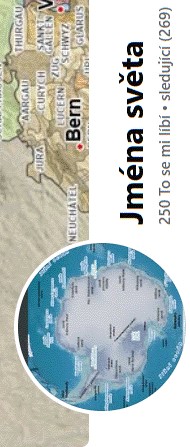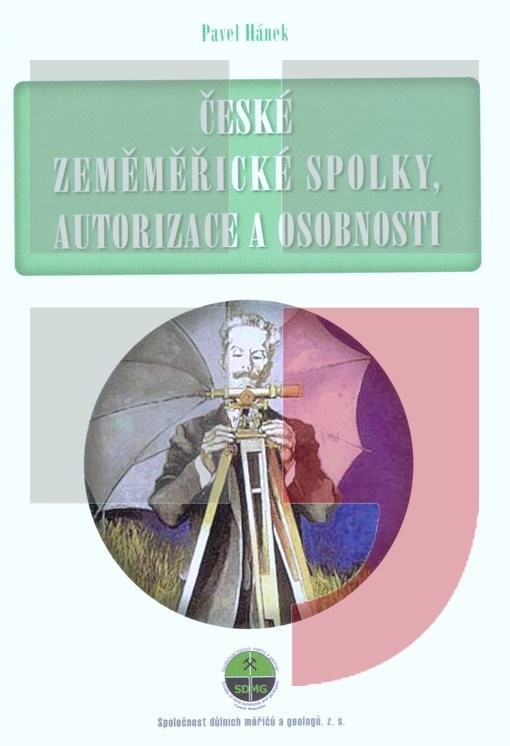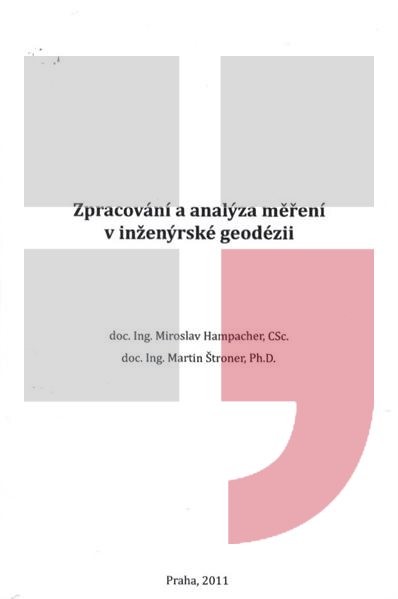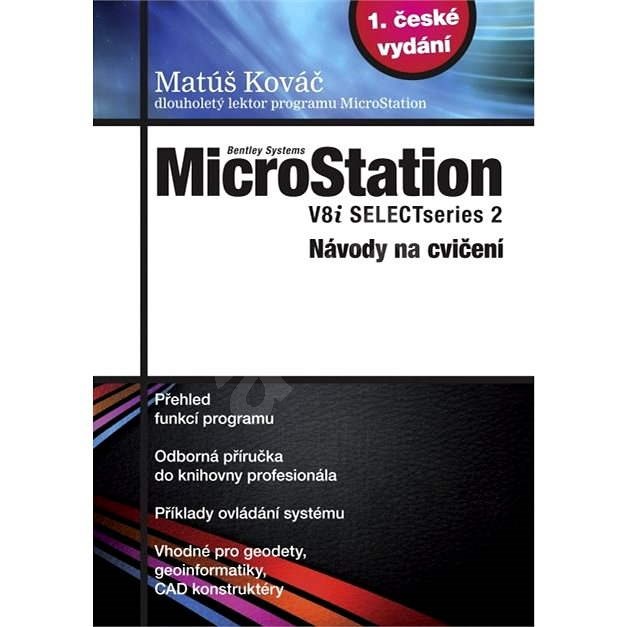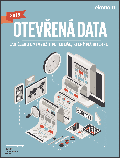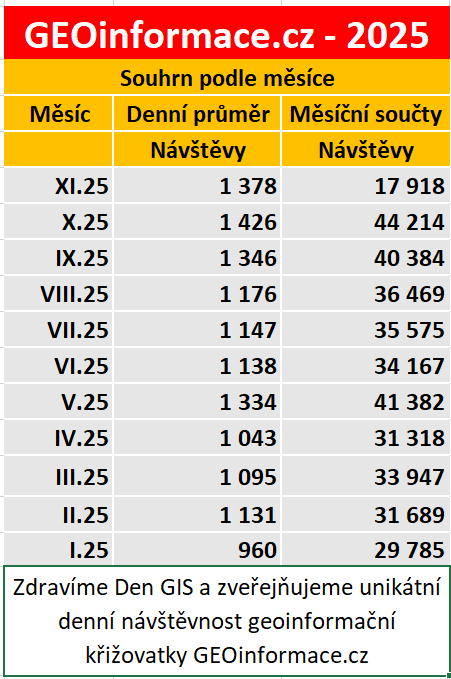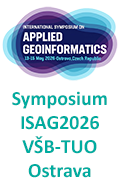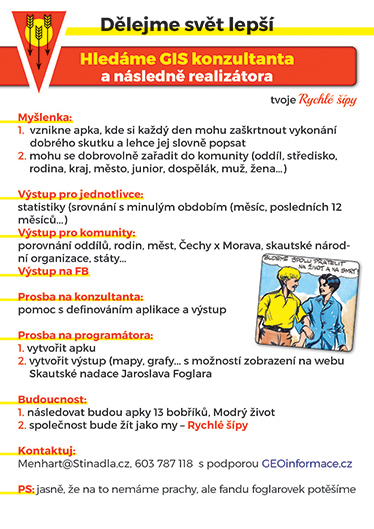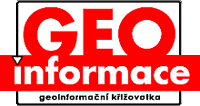zprávy
zdroje zpráv:Zveřejnění obsahu informací poskytnutých na žádost dle zákona č. 106/1999 Sb. za rok 2018
17.6.2015 11:16 ČÚZK /Urady/Katastralni-urady/Katastralni-urady/Katastralni-urad-pro-Liberecky-kraj/Casto-hledane-informace/Poskytovani-informaci-106-1999-Sb/Zverejneni-obsahu-informaci-poskytnutych-na-za-(1)/20172018
17.6.2015 11:16 ČÚZK - předpisy a opatření Katastrální úřad pro Liberecký krajZverejnení obsahu informací poskytnutých na žádost dle zákona c. 106/1999 Sb.
2018
Zveřejnění obsahu informací poskytnutých na žádost dle zákona č. 106/1999 Sb. za rok 20
17.6.2015 11:16 ČÚZK /Urady/Katastralni-urady/Katastralni-urady/Katastralni-urad-pro-Liberecky-kraj/Casto-hledane-informace/Poskytovani-informaci-106-1999-Sb/Zverejneni-obsahu-informaci-poskytnutych-na-za-(1)/2017Zveřejnění obsahu informací poskytnutých na žádost dle zákona č. 106/1999 Sb. za rok 2018
17.6.2015 11:16 ČÚZK - předpisy a opatření Katastrální úřad pro Liberecký krajZverejnení obsahu informací poskytnutých na žádost dle zákona c. 106/1999 Sb.
2018
2016
17.6.2015 11:16 ČÚZK - předpisy a opatření /Urady/Katastralni-urady/Katastralni-urady/Katastralni-urad-pro-Liberecky-kraj/Casto-hledane-informace/Poskytovani-informaci-106-1999-Sb/Zverejneni-obsahu-informaci-poskytnutych-na-za-(1)/20162016
17.6.2015 11:16 ČÚZK /Urady/Katastralni-urady/Katastralni-urady/Katastralni-urad-pro-Liberecky-kraj/Casto-hledane-informace/Poskytovani-informaci-106-1999-Sb/Zverejneni-obsahu-informaci-poskytnutych-na-za-(1)/2016
Usmernenie č. USM_UGKK SR_11/2015 zo dňa 06.05.2015
16.6.2015 7:00
ÚGKK SR
Usmernenie č. USM_UGKK SR_11/2015, zo dňa 06.05.2015, ktorým sa ustanovuje postup pri vydávaní preukazu oprávňujúceho na vstup a vjazd na cudzie nehnuteľnosti a preukazu oprávňujúceho na vstup do štátnej dokumentácie a spôsob spravovania Centrálneho registra geodetov
Představení HERECAR
15.6.2015 19:51 Katedra geoinformatiky UP Olomouc Vážení studenti, ve středu budete mít na katedře jedinečnou možnost nahlédnout do útrob nejnovějšího automobilu pro snímkování komunikací od společnosti NOKIA. Jedná se o mimořádnou a jedinečnou událost. Takže pokud jste v OlomouciV datech územně analytických p
15.6.2015 12:00 Plzeňský kraj V datech územně analytických podkladů Plzeňského kraje byla provedena aktualizace dat o lesích od poskytovatele Ústav pro hospodářskou úpravu lesů Brandýs nad Labem. Data jsou s platností k 1. 6. 2015.V datech územně analytických p
15.6.2015 12:00 Plzeňský kraj V datech územně analytických podkladů Plzeňského kraje byla provedena aktualizace dat o lesích od poskytovatele Ústav pro hospodářskou úpravu lesů Brandýs nad Labem (http://geoportal.plzensky-kraj.cz/gs/rss?url=http%3A%2F%2Fgeoportal.plzensky-kraj.cz%2Ftw%2Fost%2Fgp%2Fuap%2Fposkytovatele%2Findex.php%3Fframe%26ID%3D7). Data jsou s platností k 1. 6. 2015.23. letní geografická škola
15.6.2015 7:00 Česká asociace pro geoinformace Geografický ústav Přírodovědecké fakulty MU v Brně pořádá pro učitele zeměpisu/geografie ve dnech 18. – 20. srpna 2015 23. letní geografickou školu.Více informací včetně přihlášky naleznete na webových stránkách
Připojte se k organizátorům Dne GIS 2015
15.6.2015 7:00 Česká asociace pro geoinformaceZaregistrujte svou akci u příležitosti Dne GIS a získejte zajímavé předměty pro účastníky.
Pokud se prostřednictvím webového formuláře zaregistrujete nejpozději do 18. září 2015, obdržíte pro své návštěvníky zajímavé propagační předměty. Na webových stránkách akce můžete rovněž načerpat inspiraci a prohlédnout si workshopy pro děti i dospělé nebo
Technické geodetické dílo roku 2014 - výsledky
12.6.2015 7:00 Česká asociace pro geoinformace Součástí Setkání geodetů 2015, které proběhlo ve dnech 11. a 12. června v Berouně bylo mj. vyhlášení Technického geodetického díla roku 2014. Odborná porota Komory geodetů a kartografů ocenila tato díla:1.) Geodetické práce související s výstavbou Trojského mostu v Praze
CCE Praha, spol. s.r.o. ve spolupráci s divizemi D2 a D5 a.s. Metrostav
2.) Terminologický
Ve všech mapových službách byl
10.6.2015 12:00 Plzeňský kraj Ve všech mapových službách byla provedena aktualizace adresních bodů ke dni 31.5.2015 dle dat Registru územní identifikace, adres a nemovitostí.Letní sleva 35 % na školení od ARCDATA Praha
10.6.2015 7:00 Česká asociace pro geoinformace Využijte letní slevy 35 % na školení od společnosti ARCDATA Praha, kolektivního člena CAGI. Přehled školení včetně jejich ceny a termínu naleznete na oficiálním webuEuropean Satellite Navigation Competition 2015 - uzávěrka přihlášek se blíží
10.6.2015 7:00 Česká asociace pro geoinformace Do 30. června 2015 mohou univerzity, výzkumné ústavy, soukromé společnosti i jednotlivci přihlašovat své práce do soutěže European Satellite Navigation Competition 2015.Cílem soutěže je vybrat nejlepší nápady využívající družicové navigační systémy v nejrůznějších oblastech lidské činnosti. Do soutěže může být přihlášen jakýkoli nápad, systémové
Otevíráme dveře našim klientům, a to doslova
9.6.2015 12:00 Cleerio Začali jsme psát historii přátelských setkání u nás v Geosense. Otevřeli jsme naše kanceláře i pro naše klienty. Rádi bychom navázali úzkou spolupráci s našimi zákazníky a osobně podiskutovali nad tématy správy majetku a využití našeho geoportálu. První setkání se zástupci měst a obcí proběhla v květnu a červnu. V průběhu setkání se otevřela témata, která trápí naše klienty, odpadové hospodářství, obecní poplatky a vybírání daní. Bereme jejich starosti vážně a prostřednictvím setkání jsme začali stavět nový most blízké komunikace a individuální péče. Chceme jednoduše sdílet jejich starosti, ale i radosti. Představili jsme také novinky z našeho geoportálu a velmi nás potěšilo, že většina účastníků měla zájem i o účast na samotném testování a přímou vazbu na tým našich vývojářů. Jsme rádi, že se akce setkala s pozitivními ohlasy, které nám naznačily, že setkání mají smysl, a tak s chutí připravujeme další termíny těchto...Prostornější kanceláře jsme našli ve Vysočane
Na přelomu května a června doš
8.6.2015 12:00 Plzeňský kraj Na přelomu května a června došlo k úpravám vnitřní části tohoto portálu. Mezi hlavní novinky patří: změna vzhledu (lepší kontrast); rozšíření evidence územně plánovací dokumentace; možnost exportu evidencí do formátu Excelu; integrační služby pro Spirit/MISYS/Geostore; nová aplikace Ostatní data ÚAP; úpravy zabezpečení jednotlivých modulů a drobné opravy a úpravy. Pro správné fungování všech aplikací Geoportálu doporučujeme promazat paměť prohlížeče, který používáte.Jak dopadl letošní GISáček?
6.6.2015 7:00 Česká asociace pro geoinformace Tradiční studentská soutěž GISáček zná své vítěze. Letošní ročník patřil především studentům Univerzity Palackého, kteří získali hned polovinu z umístění v nejlepší trojici. Mimo výsledků soutěže naleznete na webu akce i fotogalerii z etošníhoZajímavé mapy 10: EuroBirdPortal - mapování ptactva nad Evropou
6.6.2015 7:00 Česká asociace pro geoinformace EuroBirdPortal je datové úložiště velkého množství ptačích pozorování napříč celou Evropou, jehož cílem je především modelování distribuce různých druhů ptáků v čase a prostoru. A co lepšího použít k vizualizaci dat, nežJak dopadl letošní GISáček?
6.6.2015 7:00 Česká asociace pro geoinformace Tradiční studentská soutěž GISáček zná své vítěze. Letošní ročník patřil především studentům Univerzity Palackého, kteří získali hned polovinu z umístění v nejlepší trojici. Výsledky soutěže naleznete na webu20150604 - Aktualizace AM (CSV) a číselník VO
4.6.2015 11:06 ČÚZK /Uvod/Produkty-a-sluzby/RUIAN/RUIAN-novinky/2015/20150604-aktualizace-AM-(CSV)-a-ciselnik-VO20150604 - Aktualizace AM (CSV) a číselník VO
4.6.2015 11:06 ČÚZK - předpisy a opatření /Uvod/Produkty-a-sluzby/RUIAN/RUIAN-novinky/2015/20150604-aktualizace-AM-(CSV)-a-ciselnik-VOVýsledky soutěže GISÁČEK
3.6.2015 17:24 Katedra geoinformatiky UP Olomouc Dne 29. 5. proběhla v Ostravě letošní soutěž GISÁČEK. V magisterské sekci se umístili na 1. místě Jan Šarata na 3. místě Karel Macků. V bakalářské sekci se na 2. místě umístil Radek Barvíř. UP Olomouc se tak zcela jednoznačně staOhlédnutí za 4. českým uživatelským fórem Copernicus
1.6.2015 7:00 Česká asociace pro geoinformace Jaké bylo letošní české uživatelské fórum Copernicus? Zavítejte na oficiální web akce a projděte si prezentace jednotlivých21. kartografická konference - rámcový program
1.6.2015 7:00 Česká asociace pro geoinformace Na webu 21. kartografické konference, která se koná v září v Lednici, byl již nyní zveřejněn rámcový programPracovní pozice
27.5.2015 17:43 Katedra geoinformatiky UP Olomouc Krajský úřad Středočeského kraje se sídlem v Praze vyhlásil dne 25. 5. 2015 výběrové řízení na pozici: "Správce informačních a komunikačních technologií". Více podrobných informací včetně kontaktních údajů naleznete zde: http:A už jsme v Liberci…
27.5.2015 12:00 TopGis V těchto dnech můžete naše mobilní mapovací auto potkávat v Liberci a okolí. Pořízené panoramatické snímky si nezapomeňte brzy prohlédnout na Mapy.cz nebo v prostředí GisOnline. Pokročilejším uživatelům pak poskytujeme možnost mapování a měření – výšek budov, šířek chodníků, přesných souřadnic bodů atd. prostřednictvím SW GisManager. Neváhejte nás kdykoli kontaktovat. Právě mapujeme z panoramatických snímkůGIS v plánování měst a regionů - registrujte se za zvýhodněné vložné
27.5.2015 7:00 Česká asociace pro geoinformace Česká asociace pro geoinformace (CAGI) a Vysoká škola regionálního rozvoje (VŠRR) Vás srdečně zvou k účasti na 1. ročníku konference GIS v plánování měst a regionů, která se uskuteční 10. září 2015 v Praze.Hlavními tématy letošního ročníku konference GIS v plánování měst a regionů jsou:
• Webové portály územního plánování
•
Přihlášení uživatelé nyní moho
26.5.2015 12:00 Jihočeský kraj Přihlášení uživatelé nyní mohou v sekci Můj portál - Výdej tabulkových dat získat tabulková data ÚAP.Přihlášení uživatelé nyní moho
26.5.2015 12:00 Jihočeský kraj Přihlášení uživatelé nyní mohou v sekci Můj portál - Výdej tabulkových dat (http://geoportal.kraj-jihocesky.gov.cz/vydej-tabulkovych-dat) získat tabulková data ÚAP.Gisat vyvíjí technologii pro optimalizaci výběru družicových scén z družicových archívů.
25.5.2015 10:45 Gisat Hlavním cílem projektu SUCE (Suitability Coverage Engine) je vytvořit datový a procesní model, který by umožňil automatizované vyhledání optimálního souboru družicových snímků vhodných pro mapovací a monitorovací aktivity bez nutnosti ručního výběru a přenosu nepotřebných dat.Dvě soutěže zaměřené na satelitní navigaci a družicová data
24.5.2015 7:00 Česká asociace pro geoinformaceSoutěž Copernicus Masters hledá nové nápady na využití družicových dat
European Satellite Navigation Competition
OSS Conf 2015
24.5.2015 7:00 Česká asociace pro geoinformace Slovenská Společnost pro otevřené informační technologie ve spolupráci s Fakultou řízení a informatiky Žilinské univerzity organizuje tento rok již sedmý ročník konference OSS Conf 2015, která mj. obsahuje i sekce Open GIS a Open Data. Konference se koná v Žilině od 1. do 3. července 2015.Více informací naleznete na oficiálním webu
Geoportál Ústeckého kraje je j
22.5.2015 12:00 Ústecký krajGeoportál Ústeckého kraje je již plně funkční
StreetNetCZE CROSSBORDER – CEDA rozšiřuje pokrytí daty i za hranice ČR
21.5.2015 14:25 CEDA Maps a.s. Praha, 19. května 2015 - Společnost CEDA rozšiřuje pokrytí daty i za hranice ČR. Nový produkt StreetNetCZE CROSSBORDER nabízí v obalové zóně 20 km standardní datové vrstvy geodatabáze StreetNet a v zóně 5 km další vybrané nadstavby.20150521 - Aktualizace zbylých kontrol
21.5.2015 13:36 ČÚZK - předpisy a opatření /Uvod/Produkty-a-sluzby/RUIAN/RUIAN-novinky/2015/20150521-Aktualizace-zbylych-kontrol20150521 - Aktualizace zbylých kontrol
21.5.2015 13:36 ČÚZK /Uvod/Produkty-a-sluzby/RUIAN/RUIAN-novinky/2015/20150521-Aktualizace-zbylych-kontrolZítra 22.5. 2015 budou provádě
21.5.2015 12:00 Ústecký krajZítra 22.5. 2015 budou prováděny úpravy na stránkách Geoportálu Ústeckého kraje, z tohoto důvodu bude GP ÚK od cca 8.00 do 14.00 mimo provoz. Děkujeme za pochopení.
V seznamu mapových služeb obla
20.5.2015 12:00 Plzeňský kraj V seznamu mapových služeb oblasti Regionální rozvoj a územní plánování (http://geoportal.plzensky-kraj.cz/gs/regionalni-rozvoj-a-uzemni-planovani/) byla aktualizována mapová služba Využití území dle dat projektůa GMES-SAGE (krajinný pokryv) (http://mapy.kr-plzensky.cz/gis/korine/). Mapová služba zobrazuje využití území (krajinný pokryv) v Plzeňském kraji dle dat projektu Land Cover z let 2012, 2006, 2000 a 1990 a z dat projektu Landcover GMES - SAGE z roku 2004.V seznamu mapových služeb obla
20.5.2015 12:00 Plzeňský kraj V seznamu mapových služeb oblasti Regionální rozvoj a územní plánování byla aktualizována mapová služba Využití území dle dat projektůa GMES-SAGE (krajinný pokryv). Mapová služba zobrazuje využití území (krajinný pokryv) v Plzeňském kraji dle dat projektu Land Cover z let 2012, 2006, 2000 a 1990 a z dat projektu Landcover GMES - SAGE z roku 2004.StreetNetCZE CROSSBORDER – CEDA rozšiřuje pokrytí daty i za hranice ČR
19.5.2015 16:30 CEDA Maps a.s. Praha, 19. května 2015 - Společnost CEDA rozšiřuje pokrytí daty i za hranice ČR. Nový produkt StreetNetCZE CROSSBORDER nabízí v obalové zóně 20 km standardní datové vrstvy geodatabáze StreetNet a v zóně 5 km další vybrané nadstavby.Videozáznamy z GIS Ostrava 2014 a 2015 online!
19.5.2015 7:00 Česká asociace pro geoinformace Pokud vás některý název článku z minulých let zaujal nebo si chcete připomenout celou akci, organizátoři konference GIS Ostrava pro vás připravili videozáznamy. Můžete si tak prohlédnout průběh české části symposia GIS Ostrava z let 2014 aSeminář k vydání publikace The European Environment: State and Outlook 2015
19.5.2015 7:00 Česká asociace pro geoinformaceCENIA, česká informační agentura životního prostředí, jako národní kontaktní bod pro Evropskou agenturu životního prostředí (EEA), ve spolupráci se Zastoupením Evropské komise v ČR si Vás dovoluje pozvat na seminář konaný při příležitosti oficiálního vydání zprávy EEA: The European Environment – state and outlook 2015 (SOER 2015).
Zpráva SOER 2015 hodnotí
Blížící se termíny konferencí
19.5.2015 7:00 Česká asociace pro geoinformace Dva důležité termíny významných tuzemských geokonferencí se blíží:25. května - termín přihlášení příspěvku na konferenci Geoinformatics (která proběhne 11. - 12. června v Praze);
31. května - termín přihlášení práce do soutěže Student GIS Projekt 2015 (vyhlášení proběhne 23. září v
Vybrané prezentace ze setkání uživatelů 2014
18.5.2015 15:34 Na stránkách jsme umístili vybrané prezentace. Rádi bychom Vám poděkovali za aktivní účast i za projevenou přízeň. Doufáme, že všechny přednáškové bloky Vás obohatily o cenné informace.Prezentace jsou ve formátu PDF.
V seznamu mapových služeb obla
18.5.2015 12:00 Plzeňský kraj V seznamu mapových služeb oblasti životní prostředí byla aktualizována mapová služba Znečištění ovzduší imisemi. Do mapové aplikace byla nově přidána data za období 2009-2013 a lze tak porovnávat hodnoty s předchozími obdobími. Informace o hodnotách jednotlivých znečišťujících látek ve zvolené oblasti lze získat kliknutím do mapy.V seznamu mapových služeb obla
18.5.2015 12:00 Plzeňský kraj V seznamu mapových služeb oblasti životní prostředí (http://geoportal.plzensky-kraj.cz/gs/zivotni-prostredi/) byla aktualizována mapová služba Znečištění ovzduší imisemi (http://mapy.kr-plzensky.cz/gis/ovzdusi_imise). Do mapové aplikace byla nově přidána data za období 2009-2013 a lze tak porovnávat hodnoty s předchozími obdobími. Informace o hodnotách jednotlivých znečišťujících látek ve zvolené oblasti lze získat kliknutím do mapy.Družice Deimos-2 pořizuje data v rozlišení 0.75m.
18.5.2015 10:45 Gisat Nová družice Deimos-2 pořizující data velmi vysokého rozlišení přechází do režimu plného komerčního provozu.Výsledky soutěže O cenu děkana 2015
15.5.2015 13:24 Katedra geoinformatiky UP Olomouc Dne 13. 5. proběhla letošní soutěž O cena děkana, která měla za naši katedru bohaté zastoupení. Děkujeme všem soutěžícím a gratulujeme vítězům!!Celkový vítěz oboru Vědy o zemi: Robert Minařík
Bakalářská sekce:
1. misto - M
Česko-ruský seminář o sdílení zkušeností v oblasti využívání družicových systémů pro dopravní sektor a krizové řízení
15.5.2015 7:00 Česká asociace pro geoinformace Ruský národní výzkumný a vývojový ústav pro informační technologie, zabezpečovací zařízení a telekomunikace v železniční dopravě ve spolupráci s Ministerstvem dopravy České republiky Vás srdečně zvou na česko-ruský seminář o praktickém využívání družicových aplikací systému GLONASS a geoinformačních technologií pro sledování stavu dopravní sítě aVeřejný zadavatel Plzeňský kra
13.5.2015 12:00 Plzeňský kraj Veřejný zadavatel Plzeňský kraj vyhlásil veřejnou zakázku malého rozsahu s názvem „Doplnění účelové mapy povrchové situace Digitální technické mapy Plzeňského kraje 2015“.Kompletní zadávací podmínky VZ jsou dostupné na E-ZAK na webové adrese (https://ezak.cnpk.cz/vz00003652), na které budou uveřejňovány i případné dodatečné informace, takže je v zájmu dodavatelů tuto adresu průběžně sledovat po celou doby lhůty pro podávání nabídek, která končí 22.5.2015 v 09:00 hod.
Ve všech mapových službách byl
13.5.2015 12:00 Plzeňský kraj Ve všech mapových službách byla provedena aktualizace vektorových katastrálních map (DKM, KMD a ÚKM). Data jsou s platností k 1. 4. 2015. Nově je v DKM zpracováno 18 katastrálních území. Stav digitalizace je k dispozici zde (http://www.cuzk.cz/Dokument.aspx?AKCE=META:SESTAVA:MDR001_XSLT:WEBCUZK_KRAJEKOD:400). Pro práci s daty katastru nemovitostí je možné například využít tuto mapovou službu (http://mapy.kr-plzensky.cz/gis/katastr/). Seznam všech mapových služeb je k dispozici zde (http://geoportal.plzensky-kraj.cz/gs/vsechny-mapy/). Zároveň došlo k aktualizaci dat ve výdejním modulu.Ve všech mapových službách byl
13.5.2015 12:00 Plzeňský kraj Ve všech mapových službách byla provedena aktualizace vektorových katastrálních map (DKM, KMD a ÚKM). Data jsou s platností k 1. 4. 2015. Nově je v DKM zpracováno 18 katastrálních území. Stav digitalizace je k dispozici zde. Pro práci s daty katastru nemovitostí je možné například využít tuto mapovou službu. Seznam všech mapových služeb je k dispozici zde. Zároveň došlo k aktualizaci dat ve výdejním modulu.Veřejný zadavatel Plzeňský kra
13.5.2015 12:00 Plzeňský kraj Veřejný zadavatel Plzeňský kraj vyhlásil veřejnou zakázku malého rozsahu s názvem „Doplnění účelové mapy povrchové situace Digitální technické mapy Plzeňského kraje 2015“. Kompletní zadávací podmínky VZ jsou dostupné na E-ZAK na webové adrese, na které budou uveřejňovány i případné dodatečné informace, takže je v zájmu dodavatelů tuto adresu průběžně sledovat po celou doby lhůty pro podávání nabídek, která končí 22.5.2015 v 09:00 hod.Konzultační semináře pro uchazeče o zkoušku odborné způsobilosti
13.5.2015 7:00 Česká asociace pro geoinformace Máte v plánu se ucházet o zkoušku odborné způsobilosti k udělení úředního oprávnění pro ověřování výsledků zeměměřických činností? Pak si nenechte ujít o Konzultační semináře, které v červnu pořádáZajímavé mapy 9
13.5.2015 7:00 Česká asociace pro geoinformace V poslední době jsou velice populární tzv. story maps, tedy mapy, jejichž prostřednictvím (většinou spolu s doprovodnými texty, obrázky a dalšími grafickými elementy) je vizualizován nějaký příběh, sled událostí apod. Krásným příkladem z této skupiny je The Game of Norway - mapa, která zkoumá a vysvětluje historické události, které vedly k podepsání norskéKonzultační semináře pro uchazeče o zkoušku odborné způsobilosti
13.5.2015 7:00 Česká asociace pro geoinformace Máte v plánu se ucházet o zkoušku odborné způsobilosti k udělení úředního oprávnění pro ověřování výsledků zeměměřických činností? Pak si nenechte ujít Konzultační semináře, které v červnu pořádá20150512 - Novinky v 1.6
12.5.2015 9:54 ČÚZK /Uvod/Produkty-a-sluzby/RUIAN/RUIAN-novinky/2015/20150512-Novinky-v-1-620150512 - Novinky v 1.6
12.5.2015 9:54 ČÚZK - předpisy a opatření /Uvod/Produkty-a-sluzby/RUIAN/RUIAN-novinky/2015/20150512-Novinky-v-1-6Novinky-ISUI_VDP-v-RUIAN-1_8
12.5.2015 9:22 ČÚZK - předpisy a opatření /Uvod/Produkty-a-sluzby/RUIAN/1-Editacni-agendovy-system-ISUI/Editacni-agendovy-system-ISUI/Novinky-ISUI_VDP-v-RUIAN-1_6_w20150511 - Aktualizace kontrol+Seznam SÚ
11.5.2015 13:37 ČÚZK /Uvod/Produkty-a-sluzby/RUIAN/RUIAN-novinky/2015/20150511-Aktualizace-kontrol-Seznam-SU20150511 - Aktualizace kontrol+Seznam SÚ
11.5.2015 13:37 ČÚZK - předpisy a opatření /Uvod/Produkty-a-sluzby/RUIAN/RUIAN-novinky/2015/20150511-Aktualizace-kontrol-Seznam-SUZajímavé mapy 8
11.5.2015 7:00 Česká asociace pro geoinformace Máte rande v cizině (nebo dokonce v rodné domovině) a nevíte, jaké chování etiketa vyžaduje? Inspirací pro vás může být následující mapa Dating Etiquette in Europe.Další zajímavou mapu, i když z úplně jiného soudku, je vizualizace míst a směrů pořízení fotografií z databáze Flickr. Podrobnosti o její tvorbě naleznete v článku na Google Maps
Český sever 1:25 000 - NP České Švýcarsko, Šluknovský výběžek - novinka v edici č.90
7.5.2015 10:10 Podrobná mapa NP České Švýcarsko (Česká Kamenice-Hřensko-Jetřichovice-Krásná Lípa-Růžová-Srbská Kamenice) a Šluknovského výběžku(Dolní Poustevna-Jiříkov-Mikulášovice-Rumburk-Šluknov-Velký Šenov).Mapa je určena všem příznivcům aktivní i rekreační turistiky.
Turistická, cykloturistická a lyžařská mapa, souřadnicový systém WGS 84, zeměpisná síť po jedné minutě. Vydáno v dubnu 2015.
Lužické hory 1:25 000, aktualizované 3. vydání
7.5.2015 10:00 Podrobná mapa CHKO Lužické hory a PP Žitavské hory.Mapa je určena všem příznivcům aktivní i rekreační turistiky.
Turistická, cykloturistická a lyžařská mapa, souřadnicový systém WGS 84, zeměpisná síť po jedné minutě. Vydáno v dubnu 2015.
Webové služby pro GP a zápisy staveb do katastru
7.5.2015 7:00 Česká asociace pro geoinformace Český svaz geodetů a kartografů Vás zve na odborný seminář Webové služby pro GP a zápisy staveb do katastru, který se uskuteční 10. června 2015 od 9:30 v Praze v kongresovém sále č. 217 na Novotného lávce 5.Více informací včetně programu a registrace naleznete na webu akce.
od 9:30 hod. do 15:00 hod.
v kongresovém sále č. 217 budovy ČSVTS v Praze 1,
Novotného
Mezní termín pro zaslání abstraktů na 21. KK již příští týden
7.5.2015 7:00 Česká asociace pro geoinformace Chystáte se prezentovat na 21. kartografické konferenci? Pak nezapomeňte na termín pro zaslání abstraktů, který je stanoven na 15. května 2015!Pro více informací nejen o důležitých datech naleznete na webu
Brigáda v prostějovské firmě PozGeo s.r.o.
6.5.2015 9:43 Katedra geoinformatiky UP Olomouc Společnost PozGeo s.r.o. se sídlem v Prostějově nabízí uplatnění pro GIS specialistu s náplní práce: údržba stávajících GIS aplikací a tvorba nových aplikací. Nástup možný ihned, předpokládaná délka brigády 3 měsíce. Výhodou2012
6.5.2015 9:24 ČÚZK - předpisy a opatření Katastrální úřad pro Moravskoslezský krajZverejnení obsahu informací poskytnutých na žádost dle zákona c. 106/1999 Sb.
2012
Data katastru nemovitostí (vče
5.5.2015 12:00 Jihočeský kraj Data katastru nemovitostí (včetně účelové katastrální mapy) byla aktualizována k 1. 4. 2015. Žádosti o ně je možné zadávat prostřednictvím výdejního modulu.Student GIS Projekt 2015
4.5.2015 7:00 Česká asociace pro geoinformace Přihlaste i Vy svojí práci do aktuálního ročníku soutěže Student GIS Projekt 2015 a hrajte o zajímavé ceny!"Soutěž Student GIS Projekt je akce vyhlašovaná pro studenty univerzit a vysokých škol, kteří pracují na projektu z oblasti GIS a využívají technologie Esri nebo ENVI. Letošní 10. ročník soutěže jako tradičně vyvrcholí studentskou konferencí, kde se sejdou
Český kras a Křivoklátsko 1:25 000, turistická mapa
2.5.2015 9:20 Pro společnost Eurokart jsme zpracovali a vydali novou podrobnou mapu CHKO Český kras a Křivoklátsko 1:25 000, 1.vydání, 4/2015.Nová vydání turistických map - Brdy 1:25 000, Hřebeny 1:25 000
1.5.2015 9:20 Pro příznivce našich turistických map 1:25 000 - skladem máme nová vydání Brdy - 3. vydání, Hřebeny - 2. vydání.Československo žije aneb imigrace do USA
30.4.2015 7:00 Česká asociace pro geoinformace O tom, že Československo má ve světě pořád ještě zvuk, vás může přesvědčit interaktivní mapa imigrace do USA. Pokud na časové ose zvolíte rok 2000, můžete vizualizovat imigraci mj. i pro občany Československa.Jinak se ale jedná o velice zajímavou mapu, škoda jen, že časová osa končí rokem
Webinář INSPIRE implementation in Finland and Germany
30.4.2015 7:00 Česká asociace pro geoinformace Zúčastněte dalšího ze série webinářů na téma implementace INSPIRE. Tentokrát představí svůj pohled na problematiku zástupci Finska a Německa.Pokud se chcete zúčastnit, postupujte podle následujících pokynů pro
Systém eCall, který bude v případě nehody zajišťovat automatické tísňové volání z paluby vozidla, bude povinně instalován ve všech nových typech aut od jara 2018
28.4.2015 13:46 Český Kosmický PortálVšechny nové modely automobilů a dodávek uvedené na trh po 31. březnu 2018 budou muset být vybaveny zařízením tísňového volání eCall, které v případě nehody automaticky vyrozumí záchranné složky. Nová pravidla dnes schválil Evropský parlament. Dopravní nehody si v roce 2014 v EU vyžádaly 25 700 obětí - nový systém by jejich počet v budoucnu měl snížit o odhadovaných 10 % ročně.
Systém eCall, který bude v případě nehody zajišťovat automatické tísňové volání z paluby vozidla, bude povinně instalován ve všech nových typech aut od jara 2018
28.4.2015 13:46 Český Kosmický PortálVšechny nové modely automobilů a dodávek uvedené na trh po 31. březnu 2018 budou muset být vybaveny zařízením tísňového volání eCall, které v případě nehody automaticky vyrozumí záchranné složky. Nová pravidla dnes schválil Evropský parlament. Dopravní nehody si v roce 2014 v EU vyžádaly 25 700 obětí - nový systém by jejich počet v budoucnu měl snížit o odhadovaných 10 % ročně.
Systém eCall, který bude v případě nehody zajišťovat automatické tísňové volání z paluby vozidla, bude povinně instalován ve všech nových typech aut od jara 2018
28.4.2015 13:46 Český Kosmický PortálVšechny nové modely automobilů a dodávek uvedené na trh po 31. březnu 2018 budou muset být vybaveny zařízením tísňového volání eCall, které v případě nehody automaticky vyrozumí záchranné složky. Nová pravidla dnes schválil Evropský parlament. Dopravní nehody si v roce 2014 v EU vyžádaly 25 700 obětí - nový systém by jejich počet v budoucnu měl snížit o odhadovaných 10 % ročně.
20150428-Informace z KN i v pátek
28.4.2015 12:34 ČÚZK - předpisy a opatření Katastrální úřad pro Středočeský kraj zveřejnil novou aktualitu: Vážení návštěvníci katastrálního úřadu, počínaje květnem letošního roku rozšiřujeme službu podávání informací z katastru nemovitostí na KP Praha-západ i na pátky v době od 8:00 do 13:00 hodin. Informace Vám poskytneme na obvyklém místě v hale budovy v prvním patře. Věříme, že rozšíření služeb přivítáte.Ve spolupráci s Odborem region
28.4.2015 12:00 Ústecký krajVe spolupráci s Odborem regionálního rozvoje byla vytvořena mapová aplikace "Regionální značky v Ústeckém kraji". Mapová aplikace obsahuje obce Ústeckého kraje a zobrazuje jejich příslušnost pod konkrétní regionální značku.
Každá oblast Ústeckého kraje má svůj vlastní neopakovatelný charakter, daný přírodním bohatstvím, kulturou a staletými tradicemi jeho obyvatel. Také výrobky a produkty pocházející z určité oblasti nesou část tohoto charakteru. Návštěvníkům pak nabízí specifickou pohostinnost a neopakovatelné zážitky.
Mapovou aplikaci naleznete v sekci MAPY - > Rozvoj kraje a cestovní ruch- > Regionální značky v Ústeckém kraji.Zajímavá vizualizace: Odkud střílí ti nejlepší hráči NBA?
28.4.2015 7:00 Česká asociace pro geoinformace Mapovat/vizualizovat lze opravdu rozličné spektrum prostorových dat. Příkladem může být monitorování střelby nejnebezpečnějších hráčů probíhajícího play off NBA.Seminář Kartografické zdroje jako kulturní dědictví
28.4.2015 7:00 Česká asociace pro geoinformaceVýzkumný ústav geodetický, topografický a kartografický, v.v.i.
a
Historický ústav Akademie v?d ČR, v.v.i.
si Vás dovolují pozvat na
seminář o digitalizaci, zpřístupňování a o nových technologiích pro práci se starými mapami, atlasy a glóby
Dne 11.6.2015
Místo konání: přednáškový sál v 6. patře budovy ČÚZK, Pod sídlišt?m 9/1800, Praha 8 -
Zverejnená Výročná správa 2014
27.4.2015 12:45 Výskumný ústav geodézie a kartografie v Bratislave Zverejnená Výročná správa 2014Aktualizace verze TopoL xT 10.0
27.4.2015 12:00 Topol Software Je připravena nová aktualizace verze TopoL xT 10.0.8, která je ke stažení na našich stránkách.Aktualizace verze TopoL xT 9.5
27.4.2015 12:00 Topol Software Je připravena nová aktualizace verze TopoL xT 9.5.10, která je ke stažení na našich stránkách.TopGis a Seznam.cz poskytují webové mapové služby
22.4.2015 12:00 TopGis Již od roku 2013 spolupracují společnosti TopGis a Seznam.cz v oblasti pořizování kvalitních geografických dat v ČR a jejich komercializace. Mapy z oblíbeného portálu Mapy.cz jsou díky své kvalitě a průběžné aktualizaci stále více žádány také jako podklad do geografických informačních systémů. Aktuální základní a turistickou mapu již dnes nabízíme do informačních systémů formou webové mapové služby WMSSeminář Quo vadis, vzdělávání?
18.4.2015 7:00 Česká asociace pro geoinformace Dovolujeme si Vás pozvat na seminář Quo vadis, vzdělávání? a zapojit se tak do diskuze k problematice vzdělávání v geodézii, geoinformatice a příbuzných oborech. Seminář se uskuteční dne 13. května 2015 na ČVUT v Praze (Thákurova 7, Praha 6, místnost C208). Účast na semináři je bezplatná.Prohlédněte si program akce a registrujte se vyplněním
21. kartografická konference - prodloužení termínů
18.4.2015 7:00 Česká asociace pro geoinformace Organizátoři 21. kartografické konference prodloužili následující termíny:Termín pro žádost o konferenční granty byl prodloužen do 30.4.2015.
Termín pro registraci za zvýhodněné vložné byl prodloužen do 30. 4. 2015.
Více o konferenci naleznete na oficiálním webu
Geoinfostrategie - fakta v kostce 2015-04
17.4.2015 22:45 Ministerstvo vnitra Oficiální text uvolněný MV ČR pro potřeby informování o GeoInfoStrategii v dalších prezentacích a článcích o projektu. Stav k 13.4.2015.20150416 - Nové dokumenty
16.4.2015 9:46 ČÚZK /Uvod/Produkty-a-sluzby/RUIAN/RUIAN-novinky/2015/20150416-Nove-dokumenty20150416 - Nové dokumenty
16.4.2015 9:46 ČÚZK - předpisy a opatření /Uvod/Produkty-a-sluzby/RUIAN/RUIAN-novinky/2015/20150416-Nove-dokumentyRegistration Now Open for Bentley's Year in Infrastructure 2015 Conference
15.4.2015 19:10 Bentley SystemsTo Register Visit www.bentley.com/YIIconference
EXTON, Pa., U.S.A. – Bentley Systems, Incorporated, the leading company dedicated to providing comprehensive software solutions for sustaining infrastructure, today announced that registration is now open for The Year in Infrastructure 2015 Conference, being held Nov. 3-5 at the Hilton London Metropole in London, U.K. This global gathering of leading figures in the world of infrastructure design, construction, and operations features a series of presentations and interactive workshops that explore the intersection of technology and business drivers, and how they are shaping the future of infrastructure delivery and investment returns.
Chris Barron, Bentley Systems vice president, corporate communications, said, “We’ve been very gratified by the enthusiastic feedback from attendees to our Year in Infrastructure conferences. The participating executives from architectural and engineering firms, construction companies, and owner-operator and government organizations found the sessions to be engaging and well worth the relatively small investment in their time. Many were able to incorporate into their strategic planning the valuable insights gained on advancements in technology and best practices, and virtually all were motivated by the Be Inspired Awards finalist presentations on extraordinary projects that took full advantage of Bentley’s BIM advancements to enhance both project and asset performance. Attendees also greatly appreciated the opportunity provided to network with their peers and the industry thought leaders speaking at the event. To ensure your availability for our 2015 conference, taking place Nov. 3-5, I encourage you to save the date or, better still, to register now!”
The Year in Infrastructure 2015 Conference will include:
- Executive Summits for C-level executives (available by invitation only):
- The Project Delivery Summit
- The Infrastructure Asset Performance Summit
- Industry-specific Forums that provide infrastructure professionals an ideal opportunity to interact with their peers and industry visionaries and learn about best practices and advances in technology:
- The Building Forum is focused on the application of collaborative BIM in multi-discipline design and general construction, with an emphasis on strategies to get a better return on BIM investments.
- The Rail and Road Forum looks beyond design and construction as it explores the application of BIM throughout the lifecycle of transportation infrastructure.
- The Oil, Gas, Chemical, and Mining Forum covers both new capital projects and ongoing operations as it explores new methods and technologies to improve both project performance and asset performance.
- The Utilities Forum addresses topics of relevance to utilities, including the impact of cloud technology on utilities workflows, new developments in meeting the challenges of subsurface utilities, best practices in engineering collaboration, and how to achieve operational excellence through better-performing assets. A concluding panel will discuss the future of the utilities industry.
- The Visions for the Future Forum features research by Bentley Fellows and their collaborating researchers. The speakers will discuss the latest results in their areas of research, including: facilitating onsite decision making through model and data navigation on mobile devices; advancing infrastructure performance through smart sensing, data analytics, and reality modeling; and streamlining construction planning through panoptic interaction.
- The Be Inspired Awards, featuring project presentations by the finalists of the 2015 Be Inspired Awards program recognizing outstanding achievement in infrastructure design, delivery, and operations; the program culminates in the presentation of the awards to this year’s winners at the Be Inspired Awards banquet;
- Media Day, a pre-conference, invitation-only briefing of over 100 members of leading international online and print media outlets on key business and technology trends in the design, construction, and operations of infrastructure;
- Ample networking opportunities built into the agenda.
For additional information about The Year in Infrastructure 2015 Conference, or to register for this event, visit www.bentley.com/YIIconference.
About Bentley SystemsBentley Systems is the global leader dedicated to providing architects, engineers, geospatial professionals, constructors, and owner-operators with comprehensive software solutions for advancing the design, construction, and operations of infrastructure. Bentley users leverage information mobility across disciplines and throughout the infrastructure lifecycle to deliver better-performing projects and assets. Bentley solutions encompass MicroStation applications for information modeling, ProjectWise collaboration services to deliver integrated projects, and AssetWise operations services to achieve intelligent infrastructure – complemented by worldwide professional services and comprehensive managed services.
Founded in 1984, Bentley has more than 3,000 colleagues in over 50 countries, more than $600 million in annual revenues, and since 2006 has invested more than $1 billion in research, development, and acquisitions.
Additional information about Bentley is available at www.bentley.com and in Bentley’s annual report. For Bentley news as it happens, subscribe to an RSS feed of Bentley press releases and news alerts. Visit The Year in Infrastructure 2015 Conference for highlights of Bentley’s premier thought-leadership event. To view a searchable collection of innovative infrastructure projects from the annual Be Inspired Awards, access Bentley’s Infrastructure Yearbooks. To access a professional networking site that enables members of the infrastructure community to connect, communicate, and learn from each other, visit Bentley Communities.
To download the Bentley Infrastructure 500 Top Owners ranking, a unique global compendium of the top public- and private-sector owners of infrastructure based on the value of their cumulative infrastructure investments, visit www.bentley.com/500.
# # #
Bentley, the “B” Bentley logo, Be, MicroStation, and ProjectWise are either registered or unregistered trademarks or service marks of Bentley Systems, Incorporated or one of its direct or indirect wholly owned subsidiaries. Other brands and product names are trademarks of their respective owners.
Dne 17.4.2015 bude aktualizová
15.4.2015 12:00 Ústecký krajDne 17.4.2015 bude aktualizován mapový server, z tohoto důvodu budou mapové služby dočasně nedostupné. Dále bude též prováděna údržba databáze s tady ÚAP a tudíž nebudou data ÚAP z výdejního modulu do odvolání dostupná ke stažení..
Děkujeme za pochopení.
20160112Oznámení o vyhlášení výběrového řízení služebního místa odborný referent KP Benešov
15.4.2015 10:14 ČÚZK - předpisy a opatření /Urady/Katastralni-urady/Katastralni-urady/Katastralni-urad-pro-Stredocesky-kraj/Katastralni-pracoviste/KP-Benesov/O-uradu/Aktuality/20150415-Pravnik-KN-Benesov20160323Oznámení o vyhlášení výběrového řízení služební místo Odborný rada oddělení akt. KP Benešov
15.4.2015 10:14 ČÚZK - předpisy a opatření /Urady/Katastralni-urady/Katastralni-urady/Katastralni-urad-pro-Stredocesky-kraj/Katastralni-pracoviste/KP-Benesov/O-uradu/Aktuality/20150415-Pravnik-KN-Benesov20160323Oznámení o vyhlášení výběrového řízení služební místo Odborný rada oddělení akt. KP Benešov
15.4.2015 10:14 ČÚZK /Urady/Katastralni-urady/Katastralni-urady/Katastralni-urad-pro-Stredocesky-kraj/Katastralni-pracoviste/KP-Benesov/O-uradu/Aktuality/20150415-Pravnik-KN-Benesov20160112Oznámení o vyhlášení výběrového řízení služebního místa odborný referent KP Benešov
15.4.2015 10:14 ČÚZK /Urady/Katastralni-urady/Katastralni-urady/Katastralni-urad-pro-Stredocesky-kraj/Katastralni-pracoviste/KP-Benesov/O-uradu/Aktuality/20150415-Pravnik-KN-BenesovVolná pozice na Zeměměřickém a katastrálním inspektorátu v Praze
15.4.2015 7:00 Česká asociace pro geoinformace Zeměměřický a katastrální inspektorát v Praze nabízí volnou pozici inspektora/inspektorky. Veškeré informace o požadavcích a pracovní náplni naleznete v nabídce zaměstnání. Termín přihlášky je 4. květnaEastman Deploys ProjectWise to Drive Collaboration Greater Efficiency and Cost Savings
15.4.2015 2:13 Bentley SystemsSanjay Gangal Interviews Ron Gant of Bentley at 2015 SPAR International
15.4.2015 2:08 Bentley SystemsVystoupení na ISSS 2015
14.4.2015 12:45 Ministerstvo vnitra GeoInfoStrategie(Strategie rozvoje infrastruktury pro prostorové informace v České republice do roku 2020)
RNDr. Eva Kubátová, odbor eGovernmentu, Ministerstvo vnitra ČR
NAPSALI O NÁS: Mapy.cz se chystají nabídnout mapy světa, nápady na výlety i dále technologicky inovovat
14.4.2015 12:00 TopGis Tisková zpráva Seznam.cz, Praha, 14. 4. 2015 Od 15. 4. může široká veřejnost vyzkoušet zásadní novinky, které Mapy.cz chystají pro své uživatele na rok 2015. V beta verzi si tak mohou osahat nové mapy světa, které jsou postaveny na datech OpenStreetMap. Seznam.cz kompletně přepsal i hledání na službě Mapy.cz, které v betě začne ladit a zvyšovatV sekci Ke stažení - Dokumenty
13.4.2015 12:00 Jihočeský kraj V sekci Ke stažení - Dokumenty (http://geoportal.kraj-jihocesky.gov.cz/dokumenty) jsou nyní k dispozici ke stažení licenční podmínky a uživatelská příručka GeoportáluV sekci Ke stažení - Dokumenty
13.4.2015 12:00 Jihočeský kraj V sekci Ke stažení - Dokumenty jsou nyní k dispozici ke stažení licenční podmínky a uživatelská příručka Geoportálu12. setkání geodetů
13.4.2015 7:00 Česká asociace pro geoinformace 12. setkání geodetů proběhne ve dnech 11. a 12. června 2015 v Berouně (BEST WESTERN Hotel Grand***). Více na webu Komory geodetů aSoutěž o nejlepší mapu a nabídka stipendia GISportálu
11.4.2015 7:00 Česká asociace pro geoinformace GISportál připravil pro své čtenáře zajímavou nabídku. V případě, že přemýšlíte o účasti na 21. kartografické konferenci, ale je pro Vás překážkou účastnický poplatek, máte možnost získat od GISportálu stipendium? Jak? Vytvořte mapu Minipivovarů v České republice a přihlašte se do 1. 5. 2015 do soutěže!Detailní podmínky naleznete v původním
Výroční souhrnná resortní zpráva za rok 2014
10.4.2015 8:44 ČÚZK /Urady/Cesky-urad-zememericky-a-katastralni/Zpravy-CUZK/Vyrocni-zpravy-CUZK-souhrne-informace/2014Výroční souhrnná resortní zpráva za rok 2014
10.4.2015 8:44 ČÚZK - předpisy a opatření Český úřad zeměměřický a katastrálníVýrocní zpráva úradu
2014



